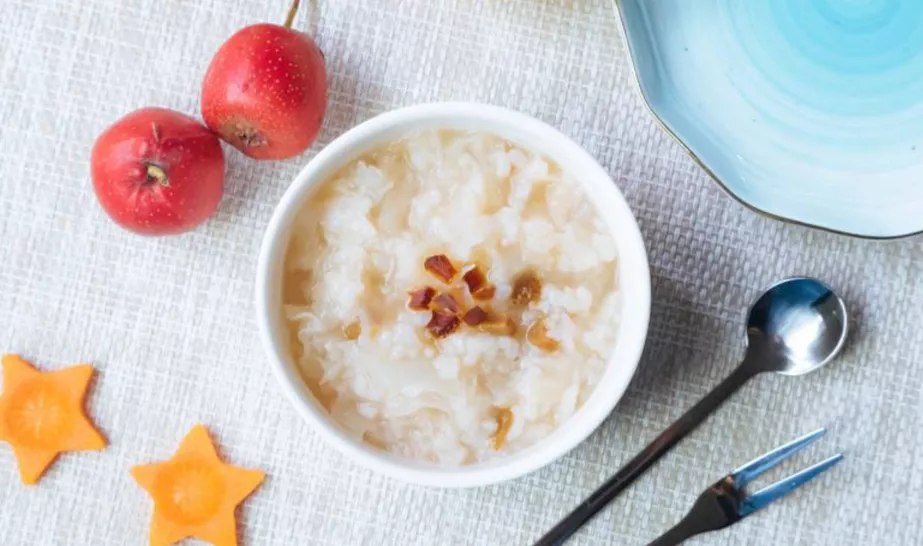Unveiling the Potential: Is Congee a Secret Weapon for Weight Loss?
Introduction
In the ever-evolving landscape of weight loss strategies, the search for wholesome and satisfying foods is endless. One contender that has been gaining attention in recent times is congee, a traditional Asian dish known for its simplicity and versatility. In this exploration, we’ll dissect the components of congee, analyze its nutritional value, and unravel whether it stands as a hidden ally in the quest for shedding those extra pounds.
Understanding: is congee good for weight loss:

Origins and Diversity
Congee, also referred to as rice porridge, has deep roots in Asian cultures. Its variations span across countries like China, Japan, Korea, and beyond, each with its unique twist on this comforting dish. Traditionally a breakfast staple, congee has transcended cultural boundaries and become a beloved choice for any time of day.
Simple Ingredients, Powerful Impact
The elemental composition of congee involves rice cooked in a generous amount of water or broth until it reaches a porridge-like consistency. While the base is simple, the magic lies in the toppings and additional ingredients. Congee can be customized with an array of proteins, vegetables, and spices, making it a canvas for both flavor and nutrition.
Is Congee good for Weight Loss:
1. Calorie Consciousness
One of the key aspects that make congee potentially beneficial for weight loss is its relatively low calorie density. The high water content contributes to its volume, allowing for a satisfying meal with fewer calories. This can be advantageous for those aiming to create a calorie deficit for weight loss.
2. Satiety and Fiber
The fiber content in congee, especially when incorporating whole grains, can enhance feelings of fullness. Fiber takes longer to digest, promoting satiety and potentially reducing the likelihood of overeating throughout the day. This aspect aligns with the principles of mindful eating, a crucial component of successful weight management.
3. Protein-Packed Possibilities
To elevate the nutritional profile of congee, adding lean proteins such as chicken, tofu, or eggs is a common practice. Protein is known for its role in muscle maintenance and repair, and it also contributes to the feeling of fullness. Including protein in congee makes it a well-rounded and satisfying option for those focused on weight loss.
Making Congee Work for Weight Loss:

1. Balanced Nutrition
While congee offers potential benefits for weight loss, balance is key. Incorporating a variety of colorful vegetables, lean proteins, and healthy fats ensures that your congee is a complete and nourishing meal. Experiment with different toppings to keep it exciting and nutrient-rich.
2. Mindful Eating Practices
Adopting mindful eating habits while consuming congee can amplify its weight loss effects. Pay attention to hunger and fullness cues, savor each bite, and eat slowly. Mindful eating promotes a better connection with your body’s signals, aiding in portion control and preventing overindulgence.
3. Individual needs of learners
However, one must always keep in mind that individual nutritional requirements differ as well as what would be suitable for one might not suit the other. Prior to making diet alterations, especially if you have current health problems seek out advice from a registered dietitian or other medical doctor.
Exploring Flavorful Variations:

1. Congee with Vegetables
Enhance the nutritional content of your congee by adding an assortment of vegetables such as spinach, carrots, or mushrooms. These additions not only contribute vitamins and minerals but also introduce vibrant flavors and textures.
2. Seafood Delight
Seafood lovers can rejoice by incorporating shrimp, fish, or even crab into their congee. Apart from being a lean protein source, seafood brings a delightful oceanic flavor that transforms your congee into a gastronomic experience.
3. Savory or Sweet
The beauty of congee lies in its adaptability. Experiment with savory versions using soy sauce, ginger, and green onions, or explore the sweeter side with toppings like honey, fresh fruits, or a sprinkle of cinnamon for a comforting dessert-like twist.
The Role of Congee in Cultural Wellness:
Beyond its potential for weight loss, congee’s significance transcends the realm of nutrition. In many Asian cultures, congee is considered a healing and soothing food. It is often recommended during times of illness or recovery due to its gentle nature and easy digestibility. Incorporating congee into your diet not only aligns with weight loss goals but also connects you to a rich culinary heritage that values both taste and well-being.
Practical Tips for Incorporating Congee:
1. Meal Prep Friendly
Prepare a large batch of congee and portion it for the week. This makes it a convenient and time-saving option, ensuring you have a wholesome meal readily available.
2. Experiment with Grains
While rice is the traditional grain for congee, don’t hesitate to explore other whole grains like quinoa, barley, or farro for added nutritional diversity.
3. Hydration Reminder
Congee’s high water content contributes to hydration, an often overlooked aspect of weight loss. Staying well-hydrated supports overall health and can aid in managing cravings.
Final Thoughts:
Incorporating congee into your weight loss journey is not just about counting calories; it’s about embracing a versatile and culturally rich dish that can be tailored to suit your tastes and nutritional needs. Whether you savor it for breakfast, lunch, or dinner, let congee be a flavorful and nourishing companion on your path to achieving your weight loss goals. As you experiment with different variations, savor each spoonful, and relish the journey towards a healthier, more vibrant you.
Conclusion: “Is congee good for weight loss”
In conclusion, congee can be a valuable addition to a weight loss-focused diet. Its simplicity, versatility, and potential for promoting satiety make it a contender worth exploring. By embracing the nutritional possibilities of congee and incorporating it mindfully into a balanced lifestyle, you may discover that this traditional dish holds a unique place in your journey towards achieving your weight loss goals.
FAQs : “Is congee good for weight loss”
1. Is congee low in calories, making it suitable for weight loss?
– Yes, congee is generally low in calories, especially when prepared with water or a low-calorie broth, making it a potentially satisfying and weight-friendly meal.
2. How does the fiber in congee contribute to weight loss?
– The fiber content in congee, particularly when made with whole grains, aids in promoting a feeling of fullness, potentially reducing overall calorie intake and supporting weight loss efforts.
3. Can congee be part of a balanced diet for weight management?
– Absolutely! Congee is versatile and can be customized with various toppings like vegetables, lean proteins, and spices, making it a nutritious and satisfying option within a balanced diet.
4. Does the high water content in congee play a role in weight loss?
– Yes, the high water content in congee not only contributes to its volume, creating a filling meal, but it also supports hydration—a factor often overlooked in weight loss and overall health.
5. Are there specific variations of congee that are better for weight loss?
– While plain congee is a good base, incorporating lean proteins like chicken or tofu, along with a variety of colorful vegetables, can enhance its nutritional value and make it an even more supportive choice for weight management.

